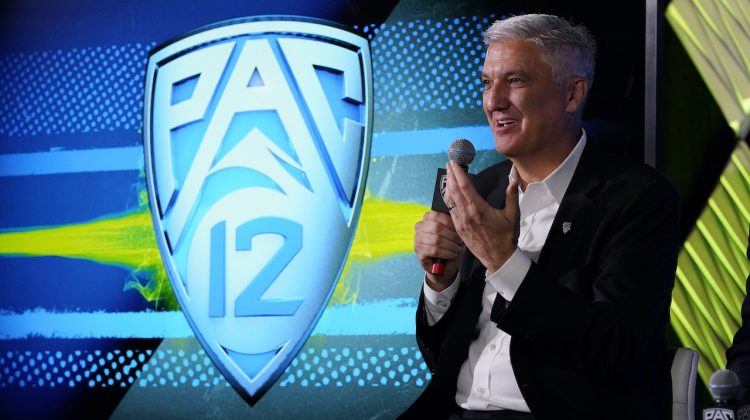Conference executives, athletic directors, head coaches, and other campus officials will convene in Scottsdale this week for the Pac-12’s annual spring meetings. But the story isn’t the participants; it’s the backdrop.
The meetings will unfold during a revolutionary era in college athletics, with momentous change targeting the revenue-producing sports and enhancing the Pac-12’s competitive challenges.
The four-day meetings, which begin Monday, are being held in-person for the first time since 2019. The agenda is packed with weighty issues.
The topics include, but aren’t limited to:
— College Football Playoff expansion
— Name, image and likeness opportunities
— Alterations to the transfer portal
— The ongoing transformation of the NCAA organization
— Pac-12 media rights negotiations
— The potential sale of statistics to gambling companies
We don’t expect the conference to announce significant changes this week on any front. Major policy shifts require approval by the presidents and chancellors, and they aren’t scheduled to meet until the middle of the month.
But the gathering will allow the coaches, athletic directors, commissioner George Kliavkoff and associate commissioner Merton Hanks to take an in-person plunge into the best strategic options for Pac-12 football.
The conference is mulling changes to the schedule (continue with nine league games or drop to eight) and the future of the division format — all with the goal of maximizing opportunities to send teams to the playoff.
But options that might have worked for a 12-team event must be reconsidered with expansion on hold until the 2026 season.
“We need to look at things that will work as a bridge to ’26,” a source said. “How can we best position ourselves until then?”
The move to eight league games seems unlikely at this point because the Big Ten is not expected to do the same. Without a partner, Pac-12 teams would not have quality options for filling the extra non-conference slot.
The future of the division format depends on factors outside the Pac-12’s control, as well.
Currently, NCAA rules require conferences to have divisions in order to stage a championship game. If the policy is relaxed, as many expect, the Pac-12 could shift to a single entity for football — the same format it uses for basketball — and still hold the event.
But that’s only half the equation. The conference must conclude that eliminating divisions is, in fact, the best strategy for optimizing CFP bids. If that proves the case, it also must decide how the participants in the title game would be determined.
Presumably, the teams with the best conference records (No. 1 and 2 in the standings) would meet for the trophy.
But because commissioner George Kliavkoff is pushing the coaches and athletic directors to consider all options when it comes to the playoff, we shouldn’t completely ignore the possibility of the Pac-12 using the penultimate CFP rankings as the determining factor for title game participation.
(We would love to be a fly on the wall for that discussion with the coaches.)
Essentially, the Pac-12 must determine the degree to which structural changes are worthwhile during these gap years until playoff expansion occurs in ’26.
It’s an extra layer of complexity for a conference with plenty of challenges to resolve — and only a few are fully within its control.
Support the Hotline: Receive three months of unlimited access for just 99 cents. Yep, that’s 99 cents for 90 days, with the option to cancel anytime. Details are here, and thanks for your support.
*** Send suggestions, comments and tips (confidentiality guaranteed) to pac12hotline@bayareanewsgroup.
*** Follow me on Twitter: @WilnerHotline
*** Pac-12 Hotline is not endorsed or sponsored by the Pac-12 Conference, and the views expressed herein do not necessarily reflect the views of the Conference.
Related posts:

(AP Photo/Marcio Jose Sanchez)
Wilner Hotline: Pac-12 North coming down to Battle of Oregon
(AP Photo/Ralph Freso, File)
Wilner Hotline: Sun Devils Missing in Action, Week 10 Pac-12 Picks
(AP Photo/Ralph Freso, File)
Wilner Hotline – One Month Until Football Signing Day, Pac-12 is Struggling Wilner Hotline – Oregon v Utah Winner, Pac-12 Weekend
Wilner Hotline – Oregon v Utah Winner, Pac-12 Weekend

